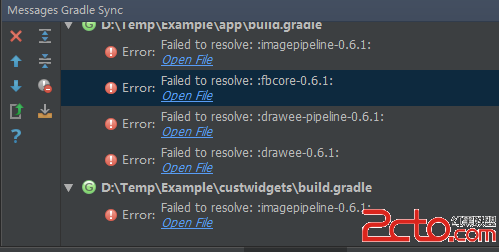編輯:關於Android編程
手機上的wifi功能,多半都被當做客戶端在使用。當做熱點共享網絡時的場景比較少。
最近做一個嘗試,將所有試圖連接到Android便攜熱點的客戶端的信息,通過底層一直上報上來,最終增加API供上層應用調用。
在原生的Android代碼中,其實已經有一個WifiDevice類來表示當前連接至wifi熱點的客戶端信息,我們先來看一下這個類是怎樣定義的。
/**
* Describes information about a detected Wi-Fi STA.
* {@hide}
*/
public class WifiDevice implements Parcelable {
/**
* The device MAC address is the unique id of a Wi-Fi STA
*/
public String deviceAddress = "";
/**
* The device name is a readable string of a Wi-Fi STA
*/
public String deviceName = "";
/**
* The device state is the state of a Wi-Fi STA
*/
public int deviceState = 0;
/**
* These definitions are for deviceState
*/
public static final int DISCONNECTED = 0;
public static final int CONNECTED = 1;
public static final int BLACKLISTED = 2;
private static final String AP_STA_CONNECTED_STR = "AP-STA-CONNECTED";
private static final String AP_STA_DISCONNECTED_STR = "AP-STA-DISCONNECTED";
private static final String AP_STA_REPORT_STR = "AP-STA-REPORT";
/** {@hide} */
public WifiDevice() {}
/**
* @param string formats supported include
*
* AP-STA-CONNECTED 42:fc:89:a8:96:09
* AP-STA-DISCONNECTED 42:fc:89:a8:96:09
*
* Note: The events formats can be looked up in the hostapd code
* @hide
*/
public WifiDevice(String dataString) throws IllegalArgumentException {
String[] tokens = dataString.split(" ");
if (tokens.length < 2) {
throw new IllegalArgumentException();
}
if (tokens[0].indexOf(AP_STA_CONNECTED_STR) != -1) {
deviceState = CONNECTED;
} else if (tokens[0].indexOf(AP_STA_DISCONNECTED_STR) != -1) {
deviceState = DISCONNECTED;
}else if (tokens[0].indexOf(AP_STA_REPORT_STR) != -1) {
deviceState = BLACKLISTED;
} else {
throw new IllegalArgumentException();
}
deviceAddress = tokens[1];
}
@Override
public boolean equals(Object obj) {
if (obj == null || !(obj instanceof WifiDevice)) {
return false;
}
WifiDevice other = (WifiDevice) obj;
if (deviceAddress == null) {
return (other.deviceAddress == null);
} else {
return deviceAddress.equals(other.deviceAddress);
}
}
/** Implement the Parcelable interface {@hide} */
public int describeContents() {
return 0;
}
/** Implement the Parcelable interface {@hide} */
public void writeToParcel(Parcel dest, int flags) {
dest.writeString(deviceAddress);
dest.writeString(deviceName);
dest.writeInt(deviceState);
}
/** Implement the Parcelable interface {@hide} */
public static final Creator CREATOR =
new Creator() {
public WifiDevice createFromParcel(Parcel in) {
WifiDevice device = new WifiDevice();
device.deviceAddress = in.readString();
device.deviceName = in.readString();
device.deviceState = in.readInt();
return device;
}
public WifiDevice[] newArray(int size) {
return new WifiDevice[size];
}
};
}
比起其他復雜的類來說,WifiDevice.java非常簡單,只有幾個成員變量和方法。 它代表一個接入到wifi熱點的客戶端的信息,其中包括了客戶端的MAC地址,主機名和接入狀態。
一般情況下,我們需要的客戶端信息也就是這幾個內容了。
不過有一個問題,WifiDevice只能表示已經正常接入熱點的客戶端,而那些曾經試圖連接熱點,但是並沒有連接成功的客戶端呢(比如由於密碼錯誤而連接失敗的)?如果我們
希望能得到周邊所有曾經和熱點發生過關系(!?)的客戶端的信息呢?如何獲取這寫信息呢?
先拋開以上的問題,我們先來了解一下,正常接入的客戶端是如何獲取它的信息的。那先得看一下Tethering.java(\frameworks\base\services\core\java\com\android\server\connectivity\Tethering.java)
tether這個詞意思是拴繩,拴住的意思,這裡可以理解成是分享的意思,比如 WIFI_TETHERING(用WIFI分享網路), USB_TETHERING(用USB分享網絡)。仔細閱讀Tethering中的代碼,可以看到,這個類主要就是
為網絡共享服務的,其中包括USB共享,藍牙共享和wifi共享。直接說Tethering,其實是跳過了connectivityservice的,上層獲取客戶端信息,其實是通過ConnectivityManager調用ConnectivityService的方法,最終
調用到Tethering的 getTetherConnectedSta() 方法。
public List getTetherConnectedSta() {
Iterator it;
List TetherConnectedStaList = new ArrayList();
if (mContext.getResources().getBoolean(com.android.internal.R.bool.config_softap_extention)) {
it = mConnectedDeviceMap.keySet().iterator();
while(it.hasNext()) {
String key = (String)it.next();
WifiDevice device = (WifiDevice)mConnectedDeviceMap.get(key);
if (VDBG) {
Log.d(TAG, "getTetherConnectedSta: addr=" + key + " name=" + device.deviceName);
}
TetherConnectedStaList.add(device);
}
}
return TetherConnectedStaList;
}
仔細看下,無非是在Tethering中定義了一個mConnectedDeviceMap成員,專門用來存放接入的客戶端信息,以下是定義
private HashMap
有兩個地方更新了這個HashMap。其實兩個地方都是 一樣的,一個是已經保存這個設備的IP信息的,另一個是如果沒有保存過,則先啟動一個DnsmasqThread線程,給客戶端分配IP後,
再講這個WifiDevice保存在HashMap中。總體來說就是在第一個方法interfaceMessageRecevied(String message)中保存了接入的客戶端信息。
1.
private static class DnsmasqThread extends Thread {
private final Tethering mTethering;
private int mInterval;
private int mMaxTimes;
private WifiDevice mDevice;
public DnsmasqThread(Tethering tethering, WifiDevice device,
int interval, int maxTimes) {
super("Tethering");
mTethering = tethering;
mInterval = interval;
mMaxTimes = maxTimes;
mDevice = device;
}
public void run() {
boolean result = false;
try {
while (mMaxTimes > 0) {
result = mTethering.readDeviceInfoFromDnsmasq(mDevice);
if (result) {
if (DBG) Log.d(TAG, "Successfully poll device info for " + mDevice.deviceAddress);
break;
}
mMaxTimes --;
Thread.sleep(mInterval);
}
} catch (Exception ex) {
result = false;
Log.e(TAG, "Pulling " + mDevice.deviceAddress + "error" + ex);
}
if (!result) {
if (DBG) Log.d(TAG, "Pulling timeout, suppose STA uses static ip " + mDevice.deviceAddress);
}
// When STA uses static ip, device info will be unavaiable from dnsmasq,
// thus no matter the result is success or failure, we will broadcast the event.
// But if the device is not in L2 connected state, it means the hostapd connection is
// disconnected before dnsmasq get device info, so in this case, don't broadcast
// connection event.
WifiDevice other = mTethering.mL2ConnectedDeviceMap.get(mDevice.deviceAddress);
if (other != null && other.deviceState == WifiDevice.CONNECTED) {
mTethering.mConnectedDeviceMap.put(mDevice.deviceAddress, mDevice);
mTethering.sendTetherConnectStateChangedBroadcast();
} else {
if (DBG) Log.d(TAG, "Device " + mDevice.deviceAddress + "already disconnected, ignoring");
}
}
}
2.
public void interfaceMessageRecevied(String message) {
// if softap extension feature not enabled, do nothing
if (!mContext.getResources().getBoolean(com.android.internal.R.bool.config_softap_extention)) {
return;
}
if (DBG) Log.d(TAG, "interfaceMessageRecevied: message=" + message);
try {
WifiDevice device = new WifiDevice(message);
if (device.deviceState == WifiDevice.CONNECTED) {
mL2ConnectedDeviceMap.put(device.deviceAddress, device);
// When hostapd reported STA-connection event, it is possible that device
// info can't fetched from dnsmasq, then we start a thread to poll the
// device info, the thread will exit after device info avaiable.
// For static ip case, dnsmasq don't hold the device info, thus thread
// will exit after a timeout.
if (readDeviceInfoFromDnsmasq(device)) {
mConnectedDeviceMap.put(device.deviceAddress, device);
sendTetherConnectStateChangedBroadcast();
} else {
if (DBG) Log.d(TAG, "Starting poll device info for " + device.deviceAddress);
new DnsmasqThread(this, device,
DNSMASQ_POLLING_INTERVAL, DNSMASQ_POLLING_MAX_TIMES).start();
}
} else if (device.deviceState == WifiDevice.DISCONNECTED) {
mL2ConnectedDeviceMap.remove(device.deviceAddress);
mConnectedDeviceMap.remove(device.deviceAddress);
sendTetherConnectStateChangedBroadcast();
。。。。。。。
interfaceMessageRecevied(String message)中,很明顯是入參message中攜帶了客戶端信息,這個信息由誰發送,看一下它的調用關系。NetworkManagementService.java中的
notifyInterfaceMessage(String message)調用了它。
/**
* Notify our observers of a change in the data activity state of the interface
*/
private void notifyInterfaceMessage(String message) {
final int length = mObservers.beginBroadcast();
for (int i = 0; i < length; i++) {
try {
mObservers.getBroadcastItem(i).interfaceMessageRecevied(message);
} catch (RemoteException e) {
} catch (RuntimeException e) {
}
}
mObservers.finishBroadcast();
}
而它的上一級調用關系是在NetworkManagementService中的NetdCallbackReceiver接收到Event事件後,根據事件的類型來逐個處理的。
case NetdResponseCode.InterfaceMessage:
/*
* An message arrived in network interface.
* Format: "NNN IfaceMessage <3>AP-STA-CONNECTED 00:08:22:64:9d:84
*/
if (cooked.length < 3 || !cooked[1].equals("IfaceMessage")) {
throw new IllegalStateException(errorMessage);
}
Slog.d(TAG, "onEvent: "+ raw);
if(cooked[4] != null) {
notifyInterfaceMessage(cooked[3] + " " + cooked[4]);
} else {
notifyInterfaceMessage(cooked[3]);
}
return true;
// break;
看上面,是接收到InterfaceMessage消息後,進行了消息處理,消息格式應該是注釋中的格式“NNN IfaceMessage <3>AP-STA-CONNECTED 00:08:22:64:9d:84”,
InterfaceMessage消息又是從何而來呢?
這塊直接跳到HAL層了,Netd進程,不知道你是否有所了解,我之前也小小研究過一下,不過僅限於使用,因為之前做過Android系統的數據卡,啟動軟AP時,都是直接
使用Netd和Softap等命令了,很好用。不過 沒有更深入的了解,,後面有機會再好好學習一下。此處消息的傳遞,就是,來源於softapcontroller。
void *SoftapController::threadStart(void *obj){
SoftapController *me = reinterpret_cast(obj);
struct wpa_ctrl *ctrl;
int count = 0;
ALOGD("SoftapController::threadStart...");
DIR *dir = NULL;
dir = opendir(HOSTAPD_SOCKETS_DIR);
if (NULL == dir && errno == ENOENT) {
mkdir(HOSTAPD_SOCKETS_DIR, S_IRWXU|S_IRWXG|S_IRWXO);
chown(HOSTAPD_SOCKETS_DIR, AID_WIFI, AID_WIFI);
chmod(HOSTAPD_SOCKETS_DIR, S_IRWXU|S_IRWXG);
} else {
if (dir != NULL) { /* Directory already exists */
ALOGD("%s already exists", HOSTAPD_SOCKETS_DIR);
closedir(dir);
}
if (errno == EACCES)
ALOGE("Cant open %s , check permissions ", HOSTAPD_SOCKETS_DIR);
}
chmod(HOSTAPD_DHCP_DIR, S_IRWXU|S_IRWXG|S_IRWXO);
ctrl = wpa_ctrl_open(HOSTAPD_UNIX_FILE);
while (ctrl == NULL) {
/*
* Try to connect to hostapd via wpa_ctrl interface.
* During conneciton process, it is possible that hostapd
* has station connected to it.
* Set sleep time to a appropriate value to lower the
* ratio that miss the STA-CONNECTED msg from hostapd
*/
usleep(20000);
ctrl = wpa_ctrl_open(HOSTAPD_UNIX_FILE);
if (ctrl != NULL || count >= 150) {
break;
}
count ++;
}
if (count == 150 && ctrl == NULL) {
ALOGE("Connection to hostapd Error.");
return NULL;
}
if (wpa_ctrl_attach(ctrl) != 0) {
wpa_ctrl_close(ctrl);
ALOGE("Attach to hostapd Error.");
return NULL;
}
while(me->mHostapdFlag) {
int res = 0;
char buf[256];
char dest_str[300];
while (wpa_ctrl_pending(ctrl)) {
size_t len = sizeof(buf) - 1;
res = wpa_ctrl_recv(ctrl, buf, &len);
if (res == 0) {
buf[len] = '\0';
ALOGD("Get event from hostapd (%s)", buf);
memset(dest_str, 0x0, sizeof(dest_str));
snprintf(dest_str, sizeof(dest_str), "IfaceMessage active %s", buf);
me->mSpsl->sendBroadcast(ResponseCode::InterfaceMessage, dest_str, false);
} else {
break;
}
}
if (res < 0) {
break;
}
sleep(2);
}
wpa_ctrl_detach(ctrl);
wpa_ctrl_close(ctrl);
return NULL;
}
此處是怎樣通信的,我還沒有搞的徹底明白,不過並不影響我們理解整個流程,總是肯定是通過socket之類的方式,將InterfaceMessage消息發送出去,
消息中所攜帶的字符串保存在"dest_str"中。如果你抓取一個logcat的log,就可以看到消息字符串的格式為“IfaceMessage active <3>AP-STA-CONNECTED 00:0a:f5:8a:be:58”,
可以和前面講的消息格式對應上。
再往前追溯一下,softapcontroller的消息來自於hostapd, (ps. hostapd的知識又是一個比較大的分支了,此處略去,可以把它理解成驅動和上層承上啟下的一個樞紐,它可以接收
來自wifi驅動的底層消息,處理後分門別類的通知給上層)。其他的不多說,消息是從sta_info.c中的ap_sta_set_authorized(struct hostapd_data *hapd, struct sta_info *sta, int authorized)
發出的。這裡面主要是發送connect和disconnect消息的,如果sta->flags & WLAN_STA_AUTHORIZED,就是說如果鑒權過了話,就發送connect, 沒有過就發送disconnect消息。
void ap_sta_set_authorized(struct hostapd_data *hapd, struct sta_info *sta,
int authorized)
{
const u8 *dev_addr = NULL;
char buf[100];
#ifdef CONFIG_P2P
u8 addr[ETH_ALEN];
#endif /* CONFIG_P2P */
if (!!authorized == !!(sta->flags & WLAN_STA_AUTHORIZED))
return;
#ifdef CONFIG_P2P
if (hapd->p2p_group == NULL) {
if (sta->p2p_ie != NULL &&
p2p_parse_dev_addr_in_p2p_ie(sta->p2p_ie, addr) == 0)
dev_addr = addr;
} else
dev_addr = p2p_group_get_dev_addr(hapd->p2p_group, sta->addr);
#endif /* CONFIG_P2P */
if (dev_addr)
os_snprintf(buf, sizeof(buf), MACSTR " p2p_dev_addr=" MACSTR,
MAC2STR(sta->addr), MAC2STR(dev_addr));
else
os_snprintf(buf, sizeof(buf), MACSTR, MAC2STR(sta->addr));
if (authorized) {
wpa_msg(hapd->msg_ctx, MSG_INFO, AP_STA_CONNECTED "%s", buf);
if (hapd->msg_ctx_parent &&
hapd->msg_ctx_parent != hapd->msg_ctx)
wpa_msg_no_global(hapd->msg_ctx_parent, MSG_INFO,
AP_STA_CONNECTED "%s", buf);
sta->flags |= WLAN_STA_AUTHORIZED;
} else {
wpa_msg(hapd->msg_ctx, MSG_INFO, AP_STA_DISCONNECTED "%s", buf);
if (hapd->msg_ctx_parent &&
hapd->msg_ctx_parent != hapd->msg_ctx)
wpa_msg_no_global(hapd->msg_ctx_parent, MSG_INFO,
AP_STA_DISCONNECTED "%s", buf);
sta->flags &= ~WLAN_STA_AUTHORIZED;
}
if (hapd->sta_authorized_cb)
hapd->sta_authorized_cb(hapd->sta_authorized_cb_ctx,
sta->addr, authorized, dev_addr);
}
一開始只知道此處會有消息發送,但是不知道是怎樣發送了,仔細看了一下wpa_msg()函數的原型,才搞明白了。
void wpa_msg(void *ctx, int level, const char *fmt, ...)
{
va_list ap;
char *buf;
int buflen;
int len;
char prefix[130];
va_start(ap, fmt);
buflen = vsnprintf(NULL, 0, fmt, ap) + 1;
va_end(ap);
buf = os_malloc(buflen);
if (buf == NULL) {
wpa_printf(MSG_ERROR, "wpa_msg: Failed to allocate message "
"buffer");
return;
}
wpa_printf(MSG_DEBUG, "@@@@wpa_msg");
va_start(ap, fmt);
prefix[0] = '\0';
if (wpa_msg_ifname_cb) {
const char *ifname = wpa_msg_ifname_cb(ctx);
if (ifname) {
int res = os_snprintf(prefix, sizeof(prefix), "%s: ",
ifname);
if (res < 0 || res >= (int) sizeof(prefix))
prefix[0] = '\0';
}
}
len = vsnprintf(buf, buflen, fmt, ap);
va_end(ap);
wpa_printf(level, "%s%s", prefix, buf);
if (wpa_msg_cb){
wpa_printf(MSG_DEBUG, "@@@@wpa_msg_cb");
wpa_msg_cb(ctx, level, 0, buf, len);
}
os_free(buf);
}
注意後面全局變量wpa_msg_cb, 在hostapd_ctrl_iface_init(struct hostapd_data *hapd)中,初始化的時候,可以看到這麼一行代碼:
hapd->msg_ctx = hapd;
wpa_msg_register_cb(hostapd_ctrl_iface_msg_cb);
這裡注冊了一個回調hostapd_ctrl_iface_msg_cb(void *ctx, int level, int global, const char *txt, size_t len),這函數調用了hostapd_ctrl_iface_send(.....)。
而這個和wpa_msg_cb有什麼關系呢?那你就得看看wpa_msg_register_cb了,原來它是將注冊的回調函數指針賦給了wpa_msg_cb,那麼wpa_msg_cb相當於
最終調用了hostapd_ctrl_iface_send用於發送消息啦。
void wpa_msg_register_cb(wpa_msg_cb_func func)
{
wpa_msg_cb = func;
}
以上就是整個framework接收到接入客戶端連接成功,並且獲取客戶端信息的流程,不過我原本看的時候,是從下往上看的,先看了hostapd發送消息的部分,再看的上層。
 Android Studio多個module導入AAR庫
Android Studio多個module導入AAR庫
介紹有時候由於需要一些自定義之後的開源庫,無法使用jCenter裡面的官方庫,又懶得自己搭建Maven倉庫,所以我們想要自己在項目裡面直接導入本地的AAR庫。通用方法和問
 Android 實現密碼輸入框動態明文/密文切換顯示效果
Android 實現密碼輸入框動態明文/密文切換顯示效果
在項目中遇到需要提供給用戶一個密碼輸入框明文/密文切換顯示的需求,在網上搜索一圈都沒有發現完整的實現,幸而找到了一個實現的思路。先上效果圖,看了錄制屏幕gif的教程,無奈
 Android程序開發之手機APP創建桌面快捷方式
Android程序開發之手機APP創建桌面快捷方式
預覽效果圖:需要權限:<uses-permission android:name=com.android.launcher.permission.INSTALL_S
 如何在Android中實現漸顯按鈕的左右滑動效果
如何在Android中實現漸顯按鈕的左右滑動效果
先看下運行效果: 程序結構:MainActivity文件中代碼:復制代碼 代碼如下:package com.android.buttonpagefl